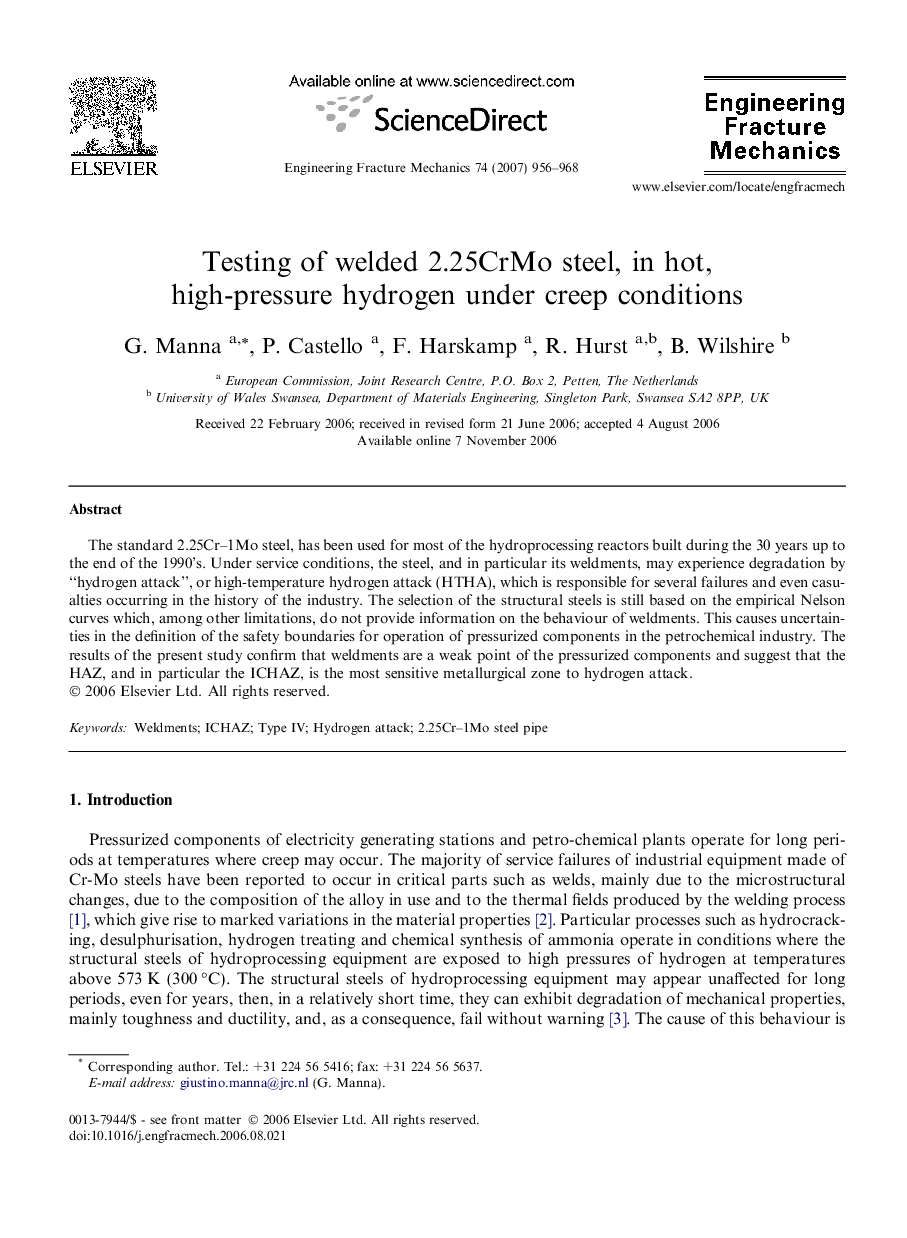| Article ID | Journal | Published Year | Pages | File Type |
|---|---|---|---|---|
| 771443 | Engineering Fracture Mechanics | 2007 | 13 Pages |
The standard 2.25Cr–1Mo steel, has been used for most of the hydroprocessing reactors built during the 30 years up to the end of the 1990’s. Under service conditions, the steel, and in particular its weldments, may experience degradation by “hydrogen attack”, or high-temperature hydrogen attack (HTHA), which is responsible for several failures and even casualties occurring in the history of the industry. The selection of the structural steels is still based on the empirical Nelson curves which, among other limitations, do not provide information on the behaviour of weldments. This causes uncertainties in the definition of the safety boundaries for operation of pressurized components in the petrochemical industry. The results of the present study confirm that weldments are a weak point of the pressurized components and suggest that the HAZ, and in particular the ICHAZ, is the most sensitive metallurgical zone to hydrogen attack.
